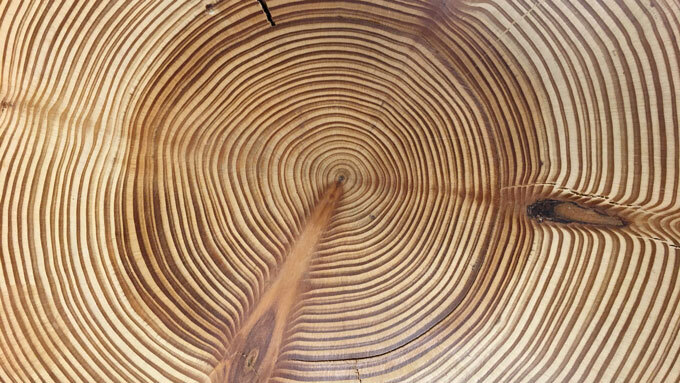The drought in southwestern North America that lasted from 2000 to 2018 is among the most severe to strike the region in the last 1,200 years, a new study finds. Tree ring–based reconstructions of past climate reveal just one drier 19-year period: a powerful “megadrought” in the late 16th century. The recent drought, researchers say, was made 47 percent more severe by human-caused climate change.
Tree rings are yearly growth bands of variable width, depending upon the ready availability of water. Using tree ring records from 1,586 sites across the western United States and northwestern Mexico — amounting to thousands of trees — hydroclimatologist Park Williams of Columbia University and colleagues created a climate history for the region going back to about the year 800. Between about 850 and 1600, several decades-long, intense “megadroughts” struck the region, on a scale not seen again until the present day, the researchers report in the April 17 Science.
A particularly devastating drought that lasted from about 1575 to 1593 is recounted in historical records and tree ring reconstructions alike, Williams says. “That was a really impressive event, and kind of the last gasp of the megadrought era,” he says. The drought may have contributed to the abandonment of New Mexico pueblos and the devastating spread of disease brought by Spanish conquistadors among Native Americans.
One of the biggest factors controlling precipitation in southwestern North America is the El Niño-Southern Oscillation, a natural cycle in which changes in tropical Pacific Ocean temperatures can alter regional weather patterns (SN: 5/2/16). During “La Niña” episodes of this pattern, colder Pacific sea surface temperatures create atmospheric waves that block Pacific storms from reaching southwestern North America, reducing rainfall. The 16th century megadrought, for example, coincided with a powerful La Niña event.
 Using tree rings, such as seen in this cross section of a ponderosa pine from north of Tucson, Ariz., researchers determined that the 2000–2018 drought in southwestern North America was one of the most severe in the last 1,200 years.Park Williams
Using tree rings, such as seen in this cross section of a ponderosa pine from north of Tucson, Ariz., researchers determined that the 2000–2018 drought in southwestern North America was one of the most severe in the last 1,200 years.Park Williams
“Over the last two decades, we’ve had a cluster of more La Niña–like years than El Niño–like years,” Williams says.
But La Niña alone was not responsible for the intensity of the recent drought, the team found. The scientists examined 31 climate simulations and stripped away underlying common temperature and precipitation trends related to human-caused climate change, leaving only natural variability. In that hypothetical modern world, they found, the recent drought would have been 47 percent less severe.
These findings add to mounting evidence that rising global temperatures in the last few decades have exacerbated the impact of reduced precipitation from La Niña events, for example, by further drying out soils and reducing snowpack and river flow, says paleoclimatologist Connie Woodhouse of the University of Arizona in Tucson, who was not involved in the study.
Williams notes that a wet 2019 offered a brief respite to the region — just as megadroughts in the past contained the odd wet year. Dry conditions resumed in 2020, and climate simulations for the next few decades predict both increasing temperatures and reduced precipitation in this part of the world.
“The take-home is that the West is in a serious drought; not [just] the worst in 50 years, but on a millennial-type timescale of importance,” Williams says.
Natural variability, like an El Niño year that could bring more rain to the region, could help alleviate drought over the next century, he adds. But “as time goes on, it’s going to take more and more good luck to end these types of droughts, and less and less bad luck to go into one of these droughts again.”
Source: Heart - www.sciencenews.org



